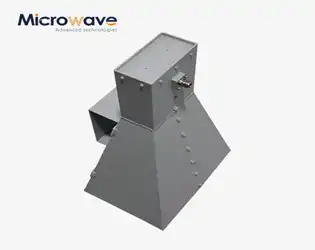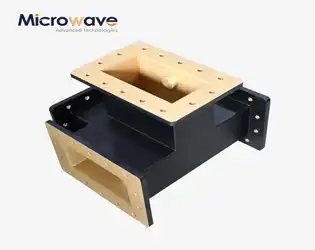BLOG

Waveguide High Power Fixed Attenuator Suppliers & Factory
October 23, 2025
When your high-frequency communication system experiences signal overload, unpredictable power fluctuations, or equipment damage from excessive signal strength, finding reliable Waveguide Fixed Attenuator solutions becomes critical. Whether you're managing satellite ground stations, military radar installations, or advanced telecommunications infrastructure, the right supplier can mean the difference between system failure and flawless performance. This comprehensive guide explores how to identify trustworthy Waveguide High Power Fixed Attenuator suppliers and factories, what technical specifications matter most, and how to ensure you're partnering with manufacturers who deliver precision-engineered components that protect your mission-critical systems.
Achieve Optimal RF Alignment with Custom Double-bend Waveguide Solutions
October 23, 2025
In modern microwave and RF systems, engineers frequently encounter a critical challenge: how to route electromagnetic signals through complex, space-constrained environments without compromising signal integrity or system performance. When traditional straight waveguides simply cannot accommodate the physical layout requirements of satellite ground stations, radar installations, or telecommunications infrastructure, signal degradation, increased reflection losses, and misalignment issues become inevitable obstacles. The Double-bend Waveguide emerges as the engineered solution to these persistent problems, offering a sophisticated approach to achieving optimal RF alignment while maintaining minimal insertion loss and superior signal quality. This article explores how custom Double-bend Waveguide solutions address real-world routing challenges and enable engineers to design more efficient, reliable microwave systems.
How Does a Double Ridge Waveguide Load Achieve VSWR Below 1.05?
October 22, 2025
In critical microwave applications where signal integrity determines mission success or failure, engineers face a persistent challenge: achieving ultra-low VSWR performance that prevents costly signal reflections and system failures. The Double Ridge Waveguide Load emerges as the definitive solution, utilizing precision conical load elements and advanced geometrical designs to achieve remarkable VSWR performance below 1.05 across the full waveguide bandwidth. This exceptional performance level represents a breakthrough in microwave termination technology, addressing the fundamental pain point of reflection-induced system degradation that has plagued high-frequency applications in satellite communications, aerospace defense systems, and precision measurement equipment.
What is the efficiency of slotted waveguide antenna?
October 22, 2025
In the demanding world of satellite communications, radar systems, and aerospace applications, engineers constantly face the critical challenge of achieving maximum signal transmission efficiency while minimizing power losses. When system failures occur due to inadequate antenna performance, the consequences can be catastrophic - from failed satellite missions costing millions to compromised defense operations. The efficiency of slotted waveguide antennas represents a make-or-break factor that determines whether your high-frequency communication system will deliver reliable, high-performance results or fall short of mission-critical requirements. Modern Slotted Waveguide Array Antenna systems can achieve remarkable efficiency levels, typically ranging from 85% to over 95%, making them the preferred choice for applications where signal integrity and power efficiency are paramount to operational success.
3 Features That Make Our End Launch Waveguide to Coaxial Adapter More Reliable
October 22, 2025
Are you tired of signal degradation and connection failures in your critical RF systems? When designing high-frequency applications for satellite communications, defense radar, or aerospace systems, unreliable signal transitions can cost you performance, time, and money. The End Launch Waveguide to Coaxial Adapter serves as the crucial bridge between waveguide and coaxial transmission lines, and its reliability directly impacts your entire system's performance. In this comprehensive guide, we explore three fundamental features that make our End Launch Waveguide to Coaxial Adapter more reliable than conventional alternatives, ensuring consistent signal integrity and long-term operational excellence in demanding environments.
2025 Guide: How Wideband Double-ridged Horn Antennas Transform Radar Systems
October 21, 2025
Radar engineers worldwide face mounting pressure to deliver systems capable of detecting smaller targets across wider frequency ranges while maintaining precise accuracy in increasingly complex electromagnetic environments. Traditional narrow-band antennas struggle to meet these escalating demands, often requiring multiple antenna arrays to cover desired frequency spans, leading to increased system complexity, higher costs, and compromised performance. The revolutionary Wideband Double-ridged Horn Antenna emerges as the definitive solution, offering unprecedented frequency coverage from 0.2GHz to 40GHz in a single, compact design. This comprehensive guide reveals how these advanced antennas are fundamentally transforming radar systems across defense, aerospace, and commercial applications, enabling detection capabilities that were previously impossible with conventional antenna technologies.
Asia-Pacific’s Fastest-Growing Waveguide Circulator Supplier for Civil & Aerospace Use
October 21, 2025
When critical aerospace missions depend on flawless signal routing and radar systems demand zero interference, the difference between success and failure often lies in the quality of your Waveguide Circulator components. In today's rapidly evolving technological landscape, engineers and procurement specialists across the Asia-Pacific region face unprecedented challenges: shorter development cycles, stricter performance requirements, and the constant pressure to deliver reliable solutions while maintaining cost efficiency. Advanced Microwave Technologies Co., Ltd. emerges as the definitive answer to these challenges, establishing itself as the region's fastest-growing Waveguide Circulator supplier specifically engineered for civil aviation and aerospace applications, where precision isn't just preferred—it's absolutely essential.
How Can an H-Plane Tee Improve Your Signal Integrity?
October 21, 2025
In today's demanding microwave communication landscape, engineers face critical challenges when signal degradation threatens system performance. Whether you're designing satellite communication networks, aerospace radar systems, or telecommunications infrastructure, maintaining pristine signal integrity while managing complex power distribution requirements can make or break your project success. The H-Plane Tee emerges as a fundamental solution to these challenges, offering superior signal splitting and combining capabilities that directly address the pain points of insertion loss, impedance mismatch, and power handling limitations that plague modern high-frequency systems.




